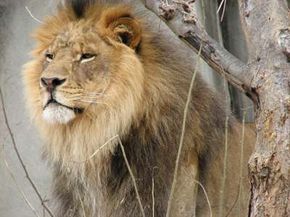Quck answer
There are several animals that are known for their loud vocalizations that can be heard for long distances. Here are seven of them:
1. Howler monkey – Their howls can be heard for up to 3 miles in the dense rainforest.
2. Lion – Their roars can be heard up to 5 miles away, making them one of the loudest big cats.
3. Elephant – Their trumpeting calls can be heard up to 5 miles away and are used to communicate with other elephants.
4. Humpback whale – Their songs can travel for hundreds of miles and can be heard by other whales.
5. Bald eagle – Their piercing screech can be heard up to a mile away and is used to communicate with other eagles.
6. Gray wolf – Their howls can be heard up to 6 miles away and are used to communicate with other members of their pack.
7. American alligator – Their deep, rumbling bellow can be heard up to half a mile away and is used to establish territory and attract mates.
Overall, these animals have developed powerful vocalizations as a means of communication and survival in their respective habitats.
Animal Facts

Animals communicate through specific sounds, such as warning of danger or for mating. Some sounds are so loud that they can travel through water or bounce off trees for miles to reach their intended recipient.
1. Blue Whale
The blue whale produces the loudest sound on Earth, registering 188 decibels. Male blue whales use their loud, rumbling call to attract mates from hundreds of miles away.
2. Howler Monkey
This monkey, found in the rainforests of the Americas, has a howl that can travel over two miles.
3. Elephant
When an elephant stomps its feet, the vibrations created can travel up to 20 miles through the ground. Elephants also use low-frequency sounds for warning, greeting, and calling their herd, registering between 80 to 90 decibels.
4. North American Bullfrog
The male N. American bullfrog emits a loud, deep bellow that can be heard up to half a mile away. The sound is created by the frog’s vocal cords.
5. Hyena
Hyenas make a high-pitched, staccato series of calls when threatened, chased, or attacked. This “laugh” can be heard up to eight miles away.
6. African Lion
Male lions use their roar to chase off rivals and exhibit dominance. Female lions use it to protect their cubs and attract males. Lion roars have been heard up to five miles away.
7. Northern Elephant Seal Bull
During mating season, the male elephant seal emits a call similar to an elephant’s trumpet. This call can be heard for several miles and lets other males and females know who controls the area.
CONTRIBUTING WRITERS:
Helen Davies, Marjorie Dorfman, Mary Fons, Deborah Hawkins, Martin Hintz, Linnea Lundgren, David Priess, Julia Clark Robinson, Paul Seaburn, Heidi Stevens, and Steve Theunissen
FAQ
1. What animals can be heard for long distances?
There are several animals that can be heard for long distances, including elephants, lions, wolves, howler monkeys, whales, giraffes, and cicadas. These animals have adapted to produce loud, low-frequency sounds that can travel through the air or water for miles.
2. How do these animals create such loud sounds?
Animals like elephants and whales create loud sounds by using their vocal cords to produce low-frequency vibrations. Lions and wolves, on the other hand, use their powerful lungs to roar or howl. Cicadas produce their loud buzzing noise by vibrating their wings.
3. Why do animals need to be heard from long distances?
Animals use loud sounds to communicate with each other, mark their territory, or attract mates. Being heard from long distances allows them to communicate with other members of their species who may be far away.
4. Can these animals hear each other from long distances as well?
Yes, many of these animals have also developed sensitive hearing to pick up on the sounds of their peers from far away. For example, elephants use their large ears to detect the low-frequency sounds of other elephants from up to 6 miles away.
5. Are there any risks associated with producing loud sounds?
Yes, producing loud sounds can be harmful to an animal’s health. For example, whales that produce loud sounds for echolocation or communication can suffer from hearing loss or physical damage to their ears. In addition, loud sounds can also disturb other animals in the area and disrupt their natural behaviors.
6. Are there any other animals that can be heard for long distances?
Yes, there are many other animals that can produce loud sounds that can be heard from far away. These include frogs, birds, hyenas, and even some insects like crickets and grasshoppers.
7. What are some interesting facts about these loud animals?
Elephants can produce sounds that are too low for humans to hear, but can travel through the ground and be detected by other elephants miles away. Howler monkeys have the loudest vocalizations of any land animal, which can be heard up to 3 miles away. And cicadas can produce sounds up to 120 decibels, which is as loud as a rock concert.





Leave a Reply